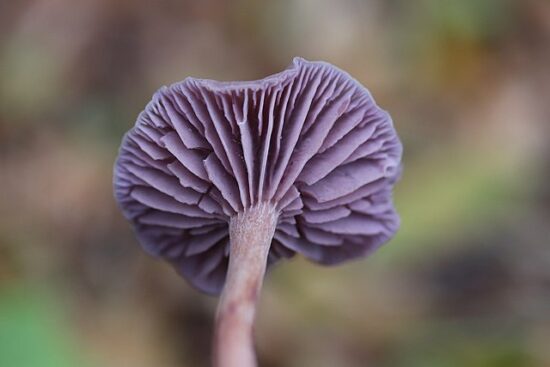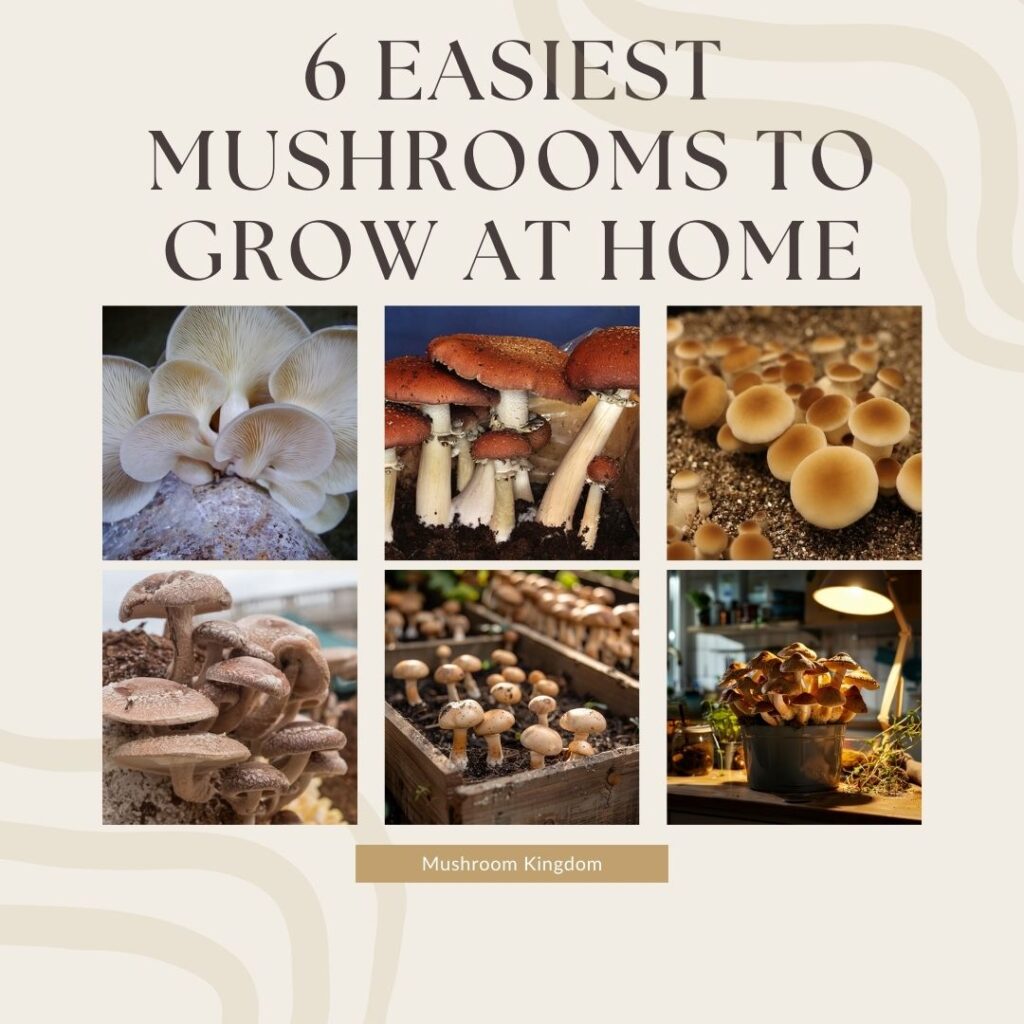Thiis article provides a comprehensive guide on Amethyst Deceiver mushroom (laccaria amethystine).
What is Amethyst Deceiver (Laccaria amethystina)?
The Amethyst Deceiver, scientifically known as Laccaria amethystina, is a captivating and vibrant mushroom that belongs to the Hydnangiaceae family.

This small, yet striking, fungus is known for its beautiful amethyst color, which makes it a standout in the forest undergrowth.
Typically found in deciduous and coniferous woodlands across Europe, Asia, and North America, the Amethyst Deceiver plays an essential role in the ecosystem by forming mycorrhizal relationships with trees.
These symbiotic relationships enhance nutrient absorption for the trees and provide carbohydrates for the fungi.
How to Identify Laccaria amethystina?
The cap of the Amethyst Deceiver is one of its most striking features. Measuring between 2–6 cm in diameter, the cap showcases a distinctive purple or violet hue that can vary in intensity.

This vibrant color is most prominent in young mushrooms. As the mushroom matures, the cap begins to flatten and sometimes develops a wavy edge, losing some of its initial vibrancy and turning a duller shade of purple.
The surface of the cap is generally smooth, but as the mushroom ages, it can become slightly wrinkled or exhibit radial lines. In dry conditions, the cap may fade significantly, making it appear more subdued and brownish.
Gills
Under the cap, the gills of the Amethyst Deceiver provide another crucial identification feature.

When young, the gills are a pale lilac to violet color, closely matching the hue of the cap. As the mushroom ages, the gills tend to fade to a light tan or brown, a transformation that can mislead those unfamiliar with this species.
The gills are widely spaced, allowing for easy visibility of their texture and color. They have a waxy texture, which can be slightly greasy to the touch, particularly in damp conditions.
Stipe (Stem)
The stipe, or stem, of the Amethyst Deceiver is another identifying trait. Typically, the stem reaches 5–10 cm in height and is about 0.5–1 cm thick.
Initially, the stem shares the vibrant color of the cap, but as the mushroom matures, it often fades and may appear almost white towards the base.
The stem is fibrous and can be slightly twisted or wavy. In cross-section, the stem is hollow, which is a distinguishing feature when compared to some other similarly colored mushrooms.
Spore Print
For mycologists and mushroom enthusiasts, the spore print of Laccaria amethystina is a valuable identification tool.
To obtain a spore print, place the cap gills-down on a piece of white paper or glass and leave it overnight. The resulting spore print should be white. This characteristic helps confirm the identity of the Amethyst Deceiver, as spore print color is a reliable and consistent trait among fungal species.
Is Amethyst Deceiver Edible?
Yes, the Amethyst Deceiver is edible. However, caution must be exercised due to its potential to absorb heavy metals from the soil, particularly in polluted areas.
Consuming mushrooms from contaminated environments can lead to heavy metal poisoning. For this reason, it is advisable to collect Amethyst Deceivers from pristine, uncontaminated forests.
In terms of culinary use, the Amethyst Deceiver is not renowned for its taste but can add a splash of color to dishes.
It is often used in mushroom mixes or as a garnish. Before consuming, it is essential to cook the mushrooms thoroughly to ensure any potential toxins are eliminated.
Where Can You Find Laccaria amethystina?
The Amethyst Deceiver thrives in both deciduous and coniferous forests. It has a widespread distribution across Europe, Asia, and North America.
This mushroom favors rich, organic soils and can often be found growing in leaf litter or mossy areas. It typically appears in late summer to autumn, thriving in the damp, cool conditions of the forest floor.
When searching for Amethyst Deceivers, look around the base of trees, as they form mycorrhizal relationships with a variety of tree species, including beech, oak, and pine. They often grow in groups or clusters, making them easier to spot.
Laccaria amethystina Etymology
The name “Amethyst Deceiver” highlights the mushroom’s striking coloration and its deceptive nature.
The term “amethyst” refers to the mushroom’s beautiful purple color, reminiscent of the gemstone. The word “deceiver” stems from its tendency to change color as it ages, which can lead to confusion in identification.
The genus name, Laccaria, comes from the Latin word “lac,” meaning milk, which may refer to the milky color of the spores. The species name, amethystina, directly points to the mushroom’s amethyst-like color.
Ecological Importance of Laccaria amethystina
The Amethyst Deceiver plays a crucial ecological role in forest ecosystems. Its mycorrhizal relationships with trees enhance the nutrient exchange between the soil and the tree roots.
This symbiotic relationship improves the tree’s ability to absorb water and nutrients, particularly phosphorus, while the fungus benefits from access to carbohydrates produced by the tree through photosynthesis.
Moreover, Laccaria amethystina contributes to soil health by breaking down organic matter, thus facilitating nutrient cycling within the forest ecosystem. This decomposition process enriches the soil, promoting the growth of plants and other fungi.
Similar Species to Laccaria amethystina
Several species closely resemble the Amethyst Deceiver, which can make identification challenging.
One such species is Laccaria laccata, commonly known as the Deceiver. Unlike the Amethyst Deceiver, Laccaria laccata typically has a duller, brownish color and lacks the vibrant purple hue.
Another similar species is Laccaria amethysteo-occidentalis, found primarily in North America. It shares the purple coloration but can be distinguished by its larger size and thicker stem.
Mycena pura, also known as the Lilac Bonnet, is another look-alike. However, Mycena pura has a more conical cap and a strong, unpleasant odor, which sets it apart from Laccaria amethystina.
Conclusion
The Amethyst Deceiver (Laccaria amethystina) is a fascinating and beautiful mushroom that captivates with its vibrant color and ecological significance.
While it is edible, foragers must exercise caution and adhere to responsible practices to ensure both their safety and the conservation of this remarkable species.


